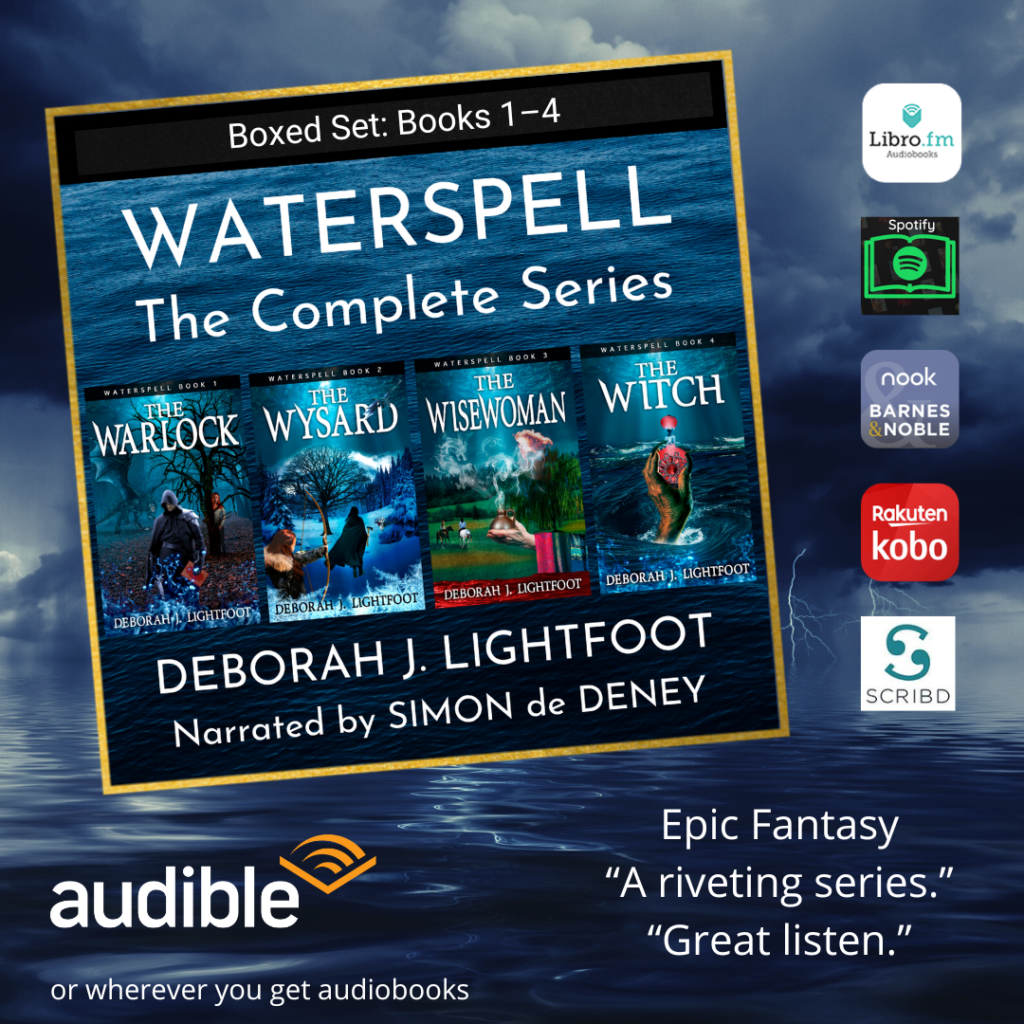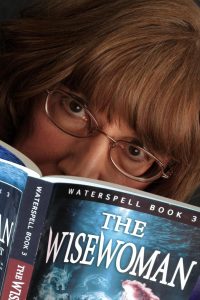 A reader and reviewer (she’s also an editor of long experience and impeccable taste) recently paid me an enormous compliment when she advised her Facebook friends to read my books because “the Waterspell trilogy is solidly in the class of great epic fantasy (e.g., Tolkien, George R. R. Martin); definitely not namby, trite fantasy, of which there is far too much.”
A reader and reviewer (she’s also an editor of long experience and impeccable taste) recently paid me an enormous compliment when she advised her Facebook friends to read my books because “the Waterspell trilogy is solidly in the class of great epic fantasy (e.g., Tolkien, George R. R. Martin); definitely not namby, trite fantasy, of which there is far too much.”
Humbled to the earth by such praise, I was moved to recall a similar discussion with an early interviewer during the long years I spent researching and writing the Waterspell trilogy. Below are excerpts (the full interview is here, on my oldest website).
Q: Does WATERSPELL take its inspiration from Celtic mythology?
A: Broadly and indirectly, yes. When I started reading the early Irish legends and Celtic myths, I was looking mainly for “the telling detail”—authentic figures of speech, colorful descriptive terms, gritty background textures. But as I read, I noticed that aspects of the mythology had their counterparts in this fantasy I was writing. Or vice versa. For instance, water often has mystical qualities in the legends—Irish rivers like the Boyne were held sacred. It’s pretty obvious from the series title—WATERSPELL—that water has magical properties in my story, too. The traditions tell of quests, leading into the Otherworld and back. “Other worlds” figure prominently in WATERSPELL—the premise is that what’s harmless in one world or reality may prove deadly if it arrives, whether innocently or by skullduggery, where it doesn’t belong. Also central to my work is the heroic quest, undertaken to gain information or wisdom, to bring healing, or to find or restore lost objects.
I am by no means an expert on Irish legends. Given the huge number of books that have been produced on the subject and the very few of them that I’ve read (see “Books”), I can barely claim a nodding acquaintance. My sole aim, in working into my writings details from the legends, is to make WATERSPELL “fit” into the world of Celtic mythology the way Tolkien’s Lord of the Rings fits with traditional Scandinavian mythology. Katharine Briggs said of Tolkien’s work: “The whole was not decorated but deepened by the use of traditional folklore which gave it that sense of being rooted in the earth which is the gift of folklore to literature.” That’s what I’m after: to create a fantasy world that’s rooted deeply in an ancient tradition.
Obviously I’m thrilled to have a reader/reviewer make the connection independently. That tells me I succeeded, at least on some level, in my attempt to pay homage to those great old Irish and Scottish storytellers who are a link to the Celtic mythology that underpins much of the fantasy genre.
Thank you, Shelley! ♥








